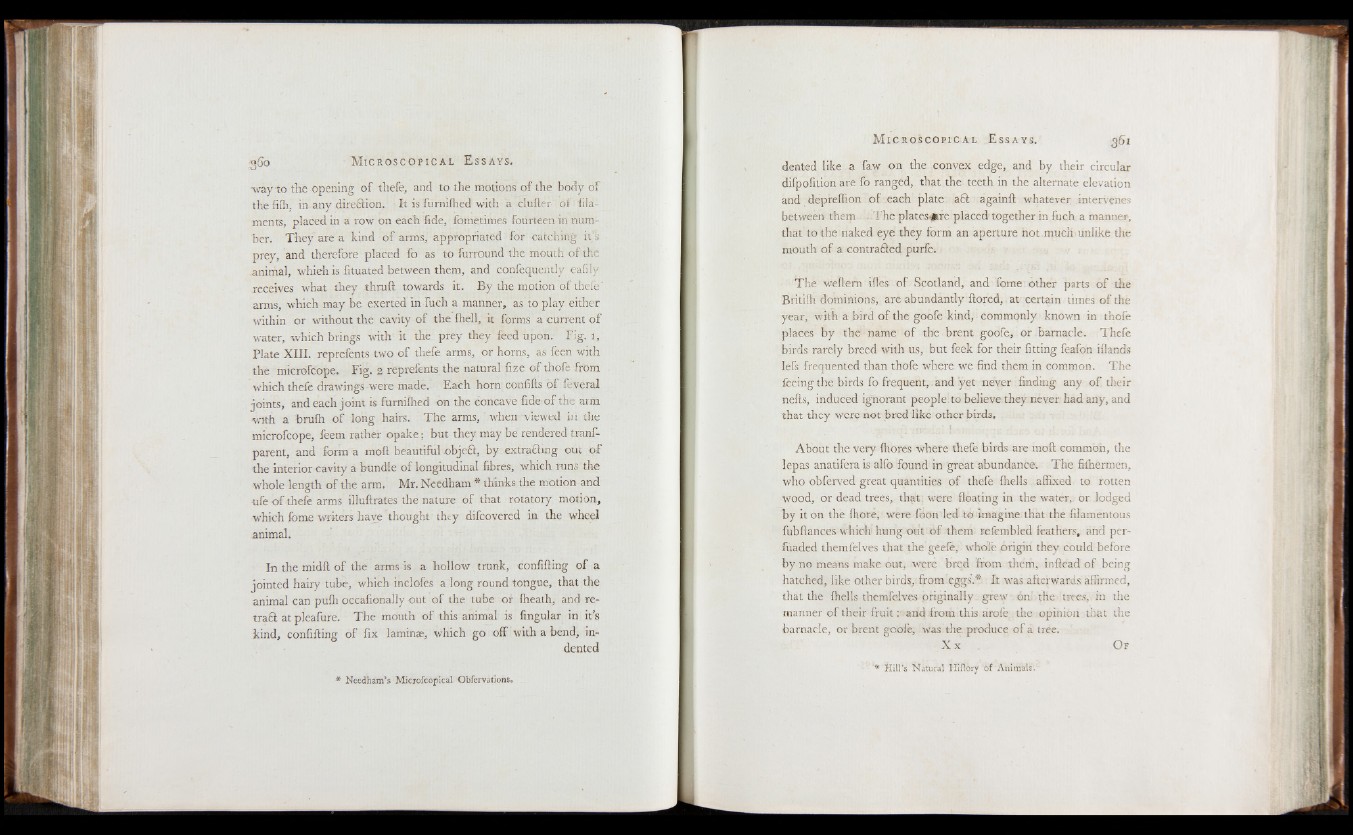
■ way to the opening o f thefe, and to the motions of the body of
the fi{h, in any direftion. It is furniflied with a clutter o f filaments,
placed in a row on each fide, fometimes fourteen in number.
They are a kind o f arms, appropriated for catching it’s
prey, and therefore placed fo as to furround the mouth of the
.animal, whieh is fituated between them, and confequently eafily
receives what they ..thruft towards it. By the motion o f thefe'
arms, which may be exerted in fuch a manner, as to play either
within or without the cavity o f the {hell, it forms a current o f
water, which brings with it the prey they feed upon. Fig. 1,
Plate XIII. reprefents two o f thefe arms, or horns, as feen with
the rnicrofcope. Fig. 2 reprefents the natural fize of thofe from
which thefe drawings were made. Each horn confifts o f feveral
joints, and each joint is furnifhed on the concave fide of the arm
with a brufh o f long hairs. The arms, when viewed in the
microfeope, feem rather opake ; but they may be rendered tranf-
parent, and form a moft beautiful objeft, by extracting out o f
the interior cavity a bundle o f longitudinal fibres, which runs the
whole length o f the arm. Mr. Needham * thinks the motion and
ufe o f thefe arms illuftrates the nature of that rotatory motion,
which fome writers have thought they difcovered in the wheel
animal.
In the midft of the arms is a hollow trunk, confifling o f a
jointed hairy tube, which inclofes a long round tongue, that the
animal can pufh occafionally out o f the tube or {heath, and re-
traft at pleafure. The mouth of this animal is Angular in it’s
kind, confifling o f fix laminae, which go off with a bend, indented
Needham’s Microfcopical Obfervations.
dented like a faw on the convex edge, and by their circular
difpofition are fo ranged, that the teeth in the alternate elevation
and depreflion o f each plate aft again!! whatever, intervenes
between them ..The plates#re placed together in fuch a manner,
that to the naked eye they form an aperture hot much unlike the
mouth of a contrafted purfe.
The weftem ifles of Scotland, and feme: other parts o f the
Britifh dominions, are abundantly ftored, at certain times o f the
year, with a bird o f the goofe kind, commonly known in thofe
places by the name of the brent goofe, or barnacle. Thefe
birds rarely breed with us, but feek for their fitting feafon iflands
lefs frequented than thofe where we find them in common. The
feeing the birds fo frequent,. and yet never finding any o f their
nefts, induced ignorant people, to believe they never had any, and
that they were not bred like other birds.
About the very fhores where thefe birds are moft common, the
lepas anatifera is alfo found in great abundance. The filhermen,
who obferved great quantities o f thefe {hells affixed to rotten
wood, or dead trees, that: were floating in the water,, or lodged
by it on the fhore, were foon led to imagine that the filamentous
fubflances which hung out o f them refembled feathers, and per-
fuaded themfelves that the geefe, whole origin they could before
by no means make out, were bred from them, inftead o f being
hatched, like other birds, from eggs’.*. It was afterwards affirmed,
that the fhells themfelves originally grew on the trees, in the
manner o f their fruit: and from this arofe the opinion that the
barnacle, or brent goofe, was the produce of a tree.
X x . O f
Hill’s Natural Hiflory of Animals.